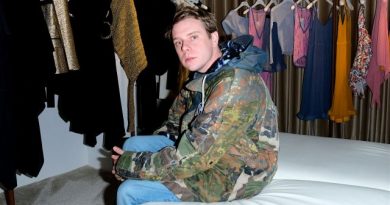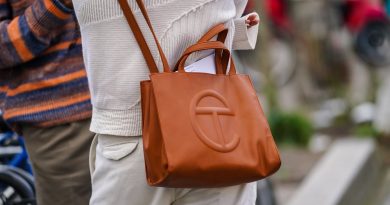Black in Fashion Council Releases First HRC Report – WWD
Fashion, according to the first Black in Fashion Council Human Rights Campaign report, is still a far cry from where it needs to be when it comes to diversity and inclusion in the industry.
One of the main takeaways of the report is that, “Black professionals face widespread discrimination and prejudice — a testament to the fashion industry’s historically racist and exclusionary nature.” The report’s executive summary notes that, “fashion has long upheld white supremacist ideologies, and has created and glorified standards of beauty and artistic expression that are explicitly anti-Black.”
The Human Rights Campaign Foundation gathered the 2021 results in good faith to further the BIFC’s mission toward diversity and inclusion. To encourage full disclosure and help ensure the survey’s accuracy, all of the 30 company participants were given anonymity. They responded this spring to questions about their current diversity, equity and inclusion policies and practices.
The report is the first of what will be yearly updates to gauge where the industry stands. Each of the 30 participants took the Black in Fashion Pledge, a three-year commitment to take the annual BIFC survey which, like the inaugural one, will be compiled in a yearly report. The BIFC provided any interested companies the opportunity to take the Active Allyship Pledge, which was geared for companies that wanted to officially partner with the BIFC but were not ready to commit to this year’s BIFC survey.
Educational and informational support was given to participants regardless of their answers, for all of the criteria, which included: Workplace Nondiscrimination, Building an Inclusive Culture, Engaging the Black Community and Corporate Social Responsibility. The respondents varied in size from large corporations with more than 500 employees to small private companies with a team of 15 or fewer.
Companies were measured on three tiers: “Building,” “Foundational” and “Innovative.” Building indicated a willingness to prioritize diversity and inclusion, but failure to report adequate DEI initiatives and strategies. Foundational showed a strategic commitment to development of diversity and inclusion but the resulting strategies were lacking in different areas. Innovative reflected a strong understanding of DEI best practices, targeted strategies to implement them and corporate awareness of the key DEI challenges and how to address them.
For workplace nondiscrimination, 13 companies were on the “Building” tier, 11 were “Foundational” and six were “Innovative.” When it came to building an inclusive culture, 13 were considered Building, one Foundational and 16 were Innovative. In terms of engaging the Black community, two companies were on the Building tier, five were Foundational and 23 were innovative. For corporate social responsibility, eight were on the Building tier, 17 were Foundational and five were Innovative.
The survey’s Workplace Nondiscrimination results highlighted glaring problems including race-based hair discrimination — as in withholding employment opportunities due to texture or protective hairstyles including braids, locks, twists or Bantu knots. The report said company policies on dress and physical appearance explicitly prohibit employees from hairstyles that are inherent to Black racial identity, and they disproportionately impact Black women and Black members of the LGBTQ community. Forty-three percent of the participants indicated the inclusion of clear, race-based nondiscrimination policies in their EEO policy.
Pay inequity is also highlighted in the report with such statistics as a Black man, on average, earns 98 cents for every dollar a “non-Hispanic” white man earns. Black women are at a greater disadvantage in terms of relative earnings, making 80 cents on the dollar, which decreases to 63 cents for full-time year-round employees. In addition, Black LGBTQ households were more likely to report lower incomes than Black non-LGBTQ households. Thirteen of the 30 companies surveyed said they had an initiative in place to address pay inequity that encompasses both gender and race.
In regards to offering unconscious bias training that cites race and ethnicity-based bias, 80 percent of the companies that participated said they did. Citing testimonials from BIFC cofounder and editor in chief of The Cut, Lindsay Peoples Wagner’s impactful 2018 article “What It’s Really Like to Be Black and Work in Fashion,” for The Cut, many Black professionals “bemoaned the oblivion surrounding their experiences with micro- and macroaggressions.”
The BIFC report noted that “if done properly unconscious bias training prevents and eliminates discriminatory speech and behavior.” Nineteen companies reported using at least one initiative to de-bias the company’s hiring process. To try to maintain a diverse pool of contract hires and talent, 20 of the companies surveyed said they have a process for a portfolio review to ensure equitable opportunities.
Seventy-seven percent of participants reported that they conducted targeted recruiting opportunities to attract Black talent, including through job fairs and Historically Black Colleges and Universities, as well as specific job boards and online postings that target the Black community. However, as the report noted, “the tokenization of Black talent exists, and roles for Black creatives are scarce and therefore difficult to obtain. The scarcity affects Black fashion professionals negatively by encouraging them to view Black peers as threats based on the acceptance that progress for one likely means regression or stagnation for the other.” To offset that, companies are advised when recruiting and hiring Black creatives, to reassure them through company support that professional advancement does not require them to solely compete with Black peers.
Without question, the majority of senior management and leaders in the industry are white or non-Black. Top fashion brands, according to the report are “still unmistakably devoid of Black representation.” There were some signs of progress, including that 22 percent of the 23 participants with boards of directors have publicly committed to having a board that includes Black representation. That said, the BIFC and its partners aim to significantly increase that in the years ahead.
To support the next generation, 20 percent of the companies have a formal professional development program for underrepresented minorities and 20 percent said they offer mentoring programs for Black employees and other underrepresented groups.
The BIFC report said participants, regardless of whether they took the Active Allyship or Black in Fashion Pledge, have made an important first step toward acknowledging and supporting Black fashion professionals.
“These signings indicate a commitment to identifying, challenging and unlearning the racist ideologies that hinder the furtherance of diversity, equity and inclusion in the fashion industry,” the report noted. Black fashion professionals, it continued, should not be subject to “harmful, systemically racist systems and ideals that are woven into the foundation of the fashion industry.”
With the inaugural report and the ones to follow, BIFC and its partners are committed to helping receptive brands create strategies and initiatives to promote diversity and inclusion in the Black fashion community. Black consumers bolster the economy in a major way with Black people having a yearly spending power of $1.3 trillion.
The report’s many poignant points include, “Although Blackness is often commodified for profit, Black people, Black experiences, and Black voices are rarely given a non-performative platform in the fashion industry.”
Acknowledging how Black people are revolutionizing the industry, the report said brands must embrace the talent of Black creatives across the board, or risk becoming obsolete. Black creatives are no longer willing to remain silent “while their talents, ideas and passions are stolen, misused and appropriated,” the report said. Leading changemakers in the industry include Pyer Moss’ Kerby Jean-Raymond, Brother Vellies’ Aurora James, Christopher John Rogers, LaQuan Smith, Shayne Oliver, Studio 189’s Abrima Erwiah and Victor Glemaud, among others.





